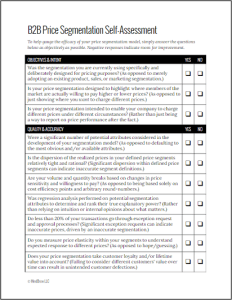Even seasoned pricing professionals will sometimes confuse reporting and analysis. After all, reporting and analysis are dealing with similar things, in similar ways—prices, volumes, margins, trend lines, scatterplots, candlesticks, etc.
So, what’s the distinction? How is pricing analysis different from reporting? And more important, why does it matter?
As we discuss in The Fundamentals of Effective Pricing Analysis, true pricing analysis differs from reporting in that analysis involves making judgments. While pricing reports will show quantitative data that reflects what’s been happening, pricing analysis is about making qualitative judgments about what the quantitative data is showing.
The Fundamentals of Effective Pricing Analysis
For example, a report can be generated to display transaction-level pricing in a particular segment. Great! Now everyone who views that report will see an accurate representation of what’s been happening in that segment.
But while this perspective is certainly valuable, true pricing analysis will go further and seek to answer a few more questions. In addition to answering the “what’s happening” question, pricing analysis should, at a minimum, also answer the following:
- Is what’s been happening good or bad? Taken alone, data-points cannot be viewed as being good or bad…they are what they are. But through the comparative process of pricing analysis, we can determine which data-points and trends are “bad” (i.e. outside the norm, to the negative) and which data-points are “good” (i.e. outside the norm, to the positive).
- Why are these good or bad things happening? Of course, the point of all of this to change the outcomes that will manifest in the future. To that end, rigorous pricing analysis will next seek to understand the root-causes and contributing factors behind both the good and bad data-points and trends.
- What should we being doing about it? Finally, once the data-points and trends can be qualitatively judged and the underlying root-causes are understood, actions should be recommended to correct/prevent the negative outcomes and promote/propagate the positive outcomes.
Obviously, reporting is prerequisite to analysis…because you can’t analyze what you can’t see.
However, reporting alone leaves the consumers of the reports to make their own judgments and draw their own conclusions, based on their individual biases, levels of understanding, and capacities for critical thought.
In sharp contrast, true pricing analysis seeks to reach more accurate judgments and conclusions, based on data and facts.














